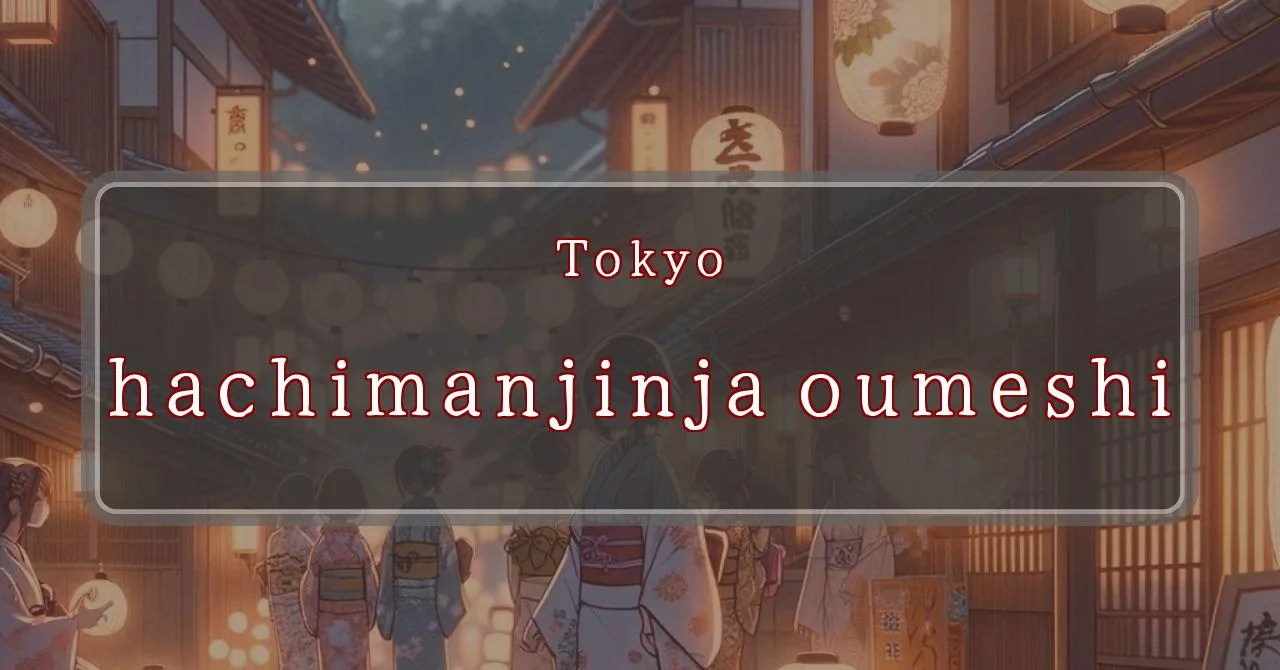Divine illumination at the foot of Mt. Mitake
Basic Information
Hachiman Shrine is a Shinto shrine located in Ome City, Tokyo, Japan. It is dedicated to the god Hachiman, the god of war and patron deity of the samurai.
- Address: 6-1220 Shimoyama, Baigo, Ome, Tokyo 198-0063
- Phone Number: 0428-76-0322
- Access: 12-minute walk from Hinatawada Station on the JR Ome Line
- Festival Days: October 15th, 2024
Main Events and Attractions of the Festival
The Hachiman Shrine Autumn Festival is a lively and colorful event that attracts many visitors each year. The main events and attractions of the festival include:
Mikoshi Procession
The highlight of the festival is the mikoshi procession, which takes place on the second day of the festival. A mikoshi is a portable shrine that is carried through the streets by a team of people. The Hachiman Shrine mikoshi is a large and elaborate structure, and it is a sight to behold as it is carried through the streets of Ome.
Kagura Performance
Kagura is a traditional Japanese dance that is often performed at Shinto festivals. At the Hachiman Shrine Autumn Festival, kagura is performed by a group of young women who are dressed in colorful costumes. The kagura performance is a beautiful and graceful sight, and it is a great way to learn more about Japanese culture.
Food Stalls
No Japanese festival is complete without food stalls, and the Hachiman Shrine Autumn Festival is no exception. There are many food stalls at the festival, selling a variety of delicious Japanese dishes. Some of the most popular dishes include yakitori (grilled chicken), takoyaki (octopus balls), and taiyaki (fish-shaped cakes filled with sweet bean paste).
Games and Activities
There are also a number of games and activities for children at the Hachiman Shrine Autumn Festival. These include traditional Japanese games such as ring toss and goldfish scooping, as well as more modern games such as face painting and balloon animals.
Blessings and Deities
Hachiman Shrine is dedicated to Hachiman, the god of war and patron deity of the samurai. Hachiman is also revered as the god of agriculture, commerce, and protection from evil.
- Hachiman: God of war, patron deity of the samurai, god of agriculture, commerce, and protection from evil
Origin and History
The origins of Hachiman Shrine are unclear, but it is believed to have been founded in the 11th century. The shrine was originally located in a different part of Ome, but it was moved to its current location in 1603.
- Founded: 11th century
- Moved to current location: 1603
Tips and Notes for Visitors
Here are some tips and notes for visitors to the Hachiman Shrine Autumn Festival:
- Wear comfortable shoes: You will be doing a lot of walking, so make sure to wear comfortable shoes.
- Bring cash: Many of the food stalls and vendors at the festival only accept cash.
- Arrive early: The festival is very popular, so it is best to arrive early to avoid the crowds.
- Be respectful: The Hachiman Shrine is a sacred place, so please be respectful of the shrine and its surroundings.
Parking Information
There is limited parking available at the Hachiman Shrine. If you are driving to the festival, it is best to arrive early to get a parking spot. There are also several public parking lots located within walking distance of the shrine.
- Limited parking available at the shrine
- Arrive early to get a parking spot
- Public parking lots located within walking distance
Popular Stalls and Food Carts in Recent Years
| Type of Stall | Description |
|---|---|
| Takoyaki | A staple at Japanese festivals. Characterized by a crispy outside and a creamy inside. |
| Jaga Butter | A simple yet popular snack of hot potatoes lavishly topped with melted butter. |
| Baby Castella | Small castella cakes, sweet and fluffy treats enjoyed by children and adults alike. |
| Grilled Ayu with Salt | Fresh ayu fish grilled whole with salt, a savory taste of Japanese summer. |
| Shaapin | A unique gourmet item influenced by foreign cuisine, with a chewy skin wrapping the filling. |
| Okonomiyaki | A Japanese grilled dish where you often choose your own ingredients for a personalized flavor. |
| Cotton Candy | A fluffy, sweet snack that’s extremely popular with children. |
| Chocolate Banana | A banana coated in chocolate, a fun and visually appealing dessert. |
| Kushiyaki | Various types of ingredients skewered and grilled, an easy-to-enjoy snack. |
| Yakisoba | Fried noodles mixed with a special sauce, a fast food favorite in Japan. |



